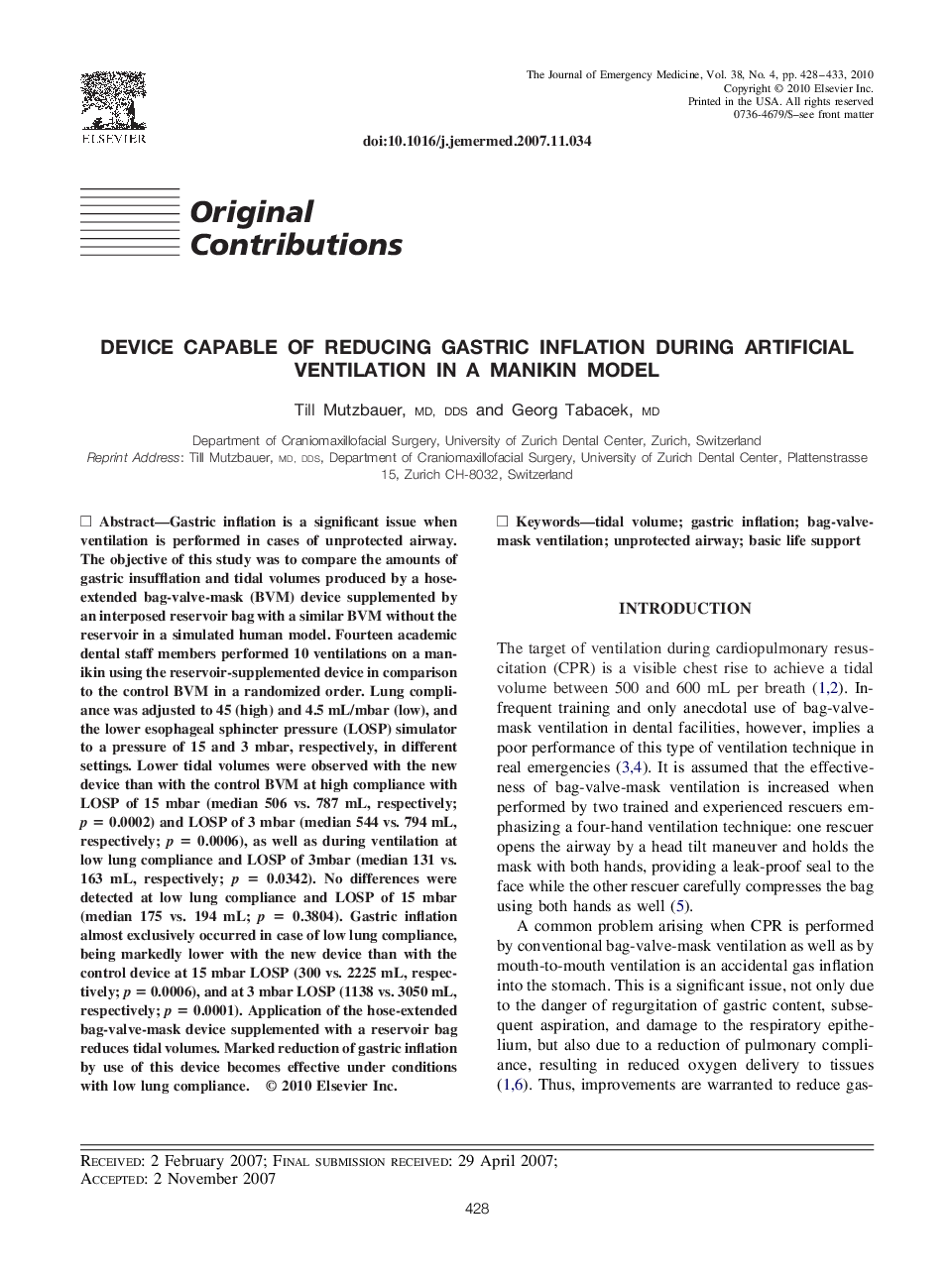| Article ID | Journal | Published Year | Pages | File Type |
|---|---|---|---|---|
| 3248609 | The Journal of Emergency Medicine | 2010 | 6 Pages |
Gastric inflation is a significant issue when ventilation is performed in cases of unprotected airway. The objective of this study was to compare the amounts of gastric insufflation and tidal volumes produced by a hose-extended bag-valve-mask (BVM) device supplemented by an interposed reservoir bag with a similar BVM without the reservoir in a simulated human model. Fourteen academic dental staff members performed 10 ventilations on a manikin using the reservoir-supplemented device in comparison to the control BVM in a randomized order. Lung compliance was adjusted to 45 (high) and 4.5 mL/mbar (low), and the lower esophageal sphincter pressure (LOSP) simulator to a pressure of 15 and 3 mbar, respectively, in different settings. Lower tidal volumes were observed with the new device than with the control BVM at high compliance with LOSP of 15 mbar (median 506 vs. 787 mL, respectively; p = 0.0002) and LOSP of 3 mbar (median 544 vs. 794 mL, respectively; p = 0.0006), as well as during ventilation at low lung compliance and LOSP of 3mbar (median 131 vs. 163 mL, respectively; p = 0.0342). No differences were detected at low lung compliance and LOSP of 15 mbar (median 175 vs. 194 mL; p = 0.3804). Gastric inflation almost exclusively occurred in case of low lung compliance, being markedly lower with the new device than with the control device at 15 mbar LOSP (300 vs. 2225 mL, respectively; p = 0.0006), and at 3 mbar LOSP (1138 vs. 3050 mL, respectively; p = 0.0001). Application of the hose-extended bag-valve-mask device supplemented with a reservoir bag reduces tidal volumes. Marked reduction of gastric inflation by use of this device becomes effective under conditions with low lung compliance.
